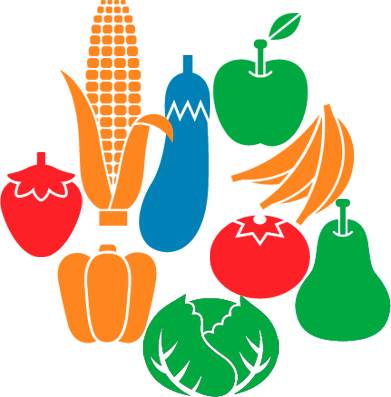Hydration and our diet
Our total daily water intake is the sum of all water content coming from all types of drinks and foods.
Replacement of the body’s water and salt losses is essential to maintain appropriate hydration and a good health status. Replacement of water can be achieved by drinking and eating. It is calculated that of the total water consumed in a typical Western diet, 20-30% comes from food and 70-80% from drinks, but this may vary greatly, depending on the diet that an individual chooses.1
Many people underestimate the water content of food and beverages, and it’s vital for us to consider both as part of our dietary fluid intake during the day.

Water content of various foods and drinks
Variety can also contribute towards enhancing nutrient and non-nutrient intake.2 Many drinks provide important nutrients and non-nutrients, including vitamins, antioxidants, phenols and electrolytes. Fruit juices can contribute to the five portions of fruit and vegetables that we are recommended to consume each day. Sports drinks contain small amounts of sugar and electrolytes that can help to reduce water, mineral and energy imbalance due to physical exertion. Drinks containing small amounts of caffeine, such as tea, milky coffee and cola beverages, all contribute to our hydration because they contain a high amount of water and the level of caffeine within them is too small to cause a significant diuretic effect.3

| Water content in common foods and beverages4* | |
|---|---|
| Type of food | Water content |
| Non-alcoholic beverages | |
| Water, tea, coffee, light refreshments, sports drinks, soft drinks, lemonade, vegetable juice | 85% to 100% |
| Milk, fruit juice | 85% to 90% |
| Alcoholic beverages | |
| Beer and wine | 85% to 95% |
| Distilled | 60% to 70% |
| Soup | |
| Consommé, onion, meat and vegetable, vegetables, tomato, mushroom cream, Noodle with chicken, vegetable concentrate, concentrated soups, mushrooms cream (made with milk) | 80% to 95% |
| Fruits and vegetables | |
| Strawberry, melon, grapefruit, grape, peach, pear, orange, apple, cucumber, lettuce, celery, tomato, pumpkin, broccoli, onion, carrot | 80% to 95% |
| Banana, potato, corn | 70% to 80% |
| Water content in common foods and beverages4* | |
|---|---|
| Type of food | Water content |
| Dairy products | |
| Fresh whole milk | 87 to 90% |
| Yoghurt | 75% to 85% |
| Ice creams | 60% to 65% |
| Cheese | 40% to 60% |
| Cereals | |
| Rice (boiled) | 65% to 70% |
| Pasta (spaghetti, macaroni, noodles) | 75% to 85%* |
| Bread, cookies | 30% to 40% |
| Breakfast cereals (ready to eat) | 2% to 5% |
| Meat, Fish, Eggs | |
| Fish and seafood | 65% to 80% |
| Eggs (scrambled, fried, poached), omelette, egg substitute | 65% to 75% |
| Beef, chicken, lamb, pig, veal | 40% to 65% |
| Cured meat, bacon | 15% to 40% |







